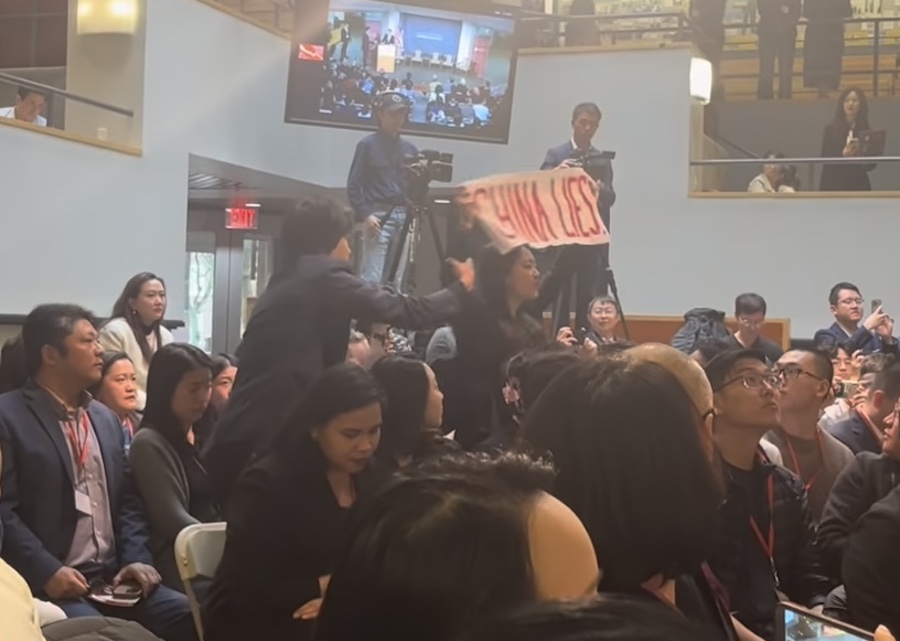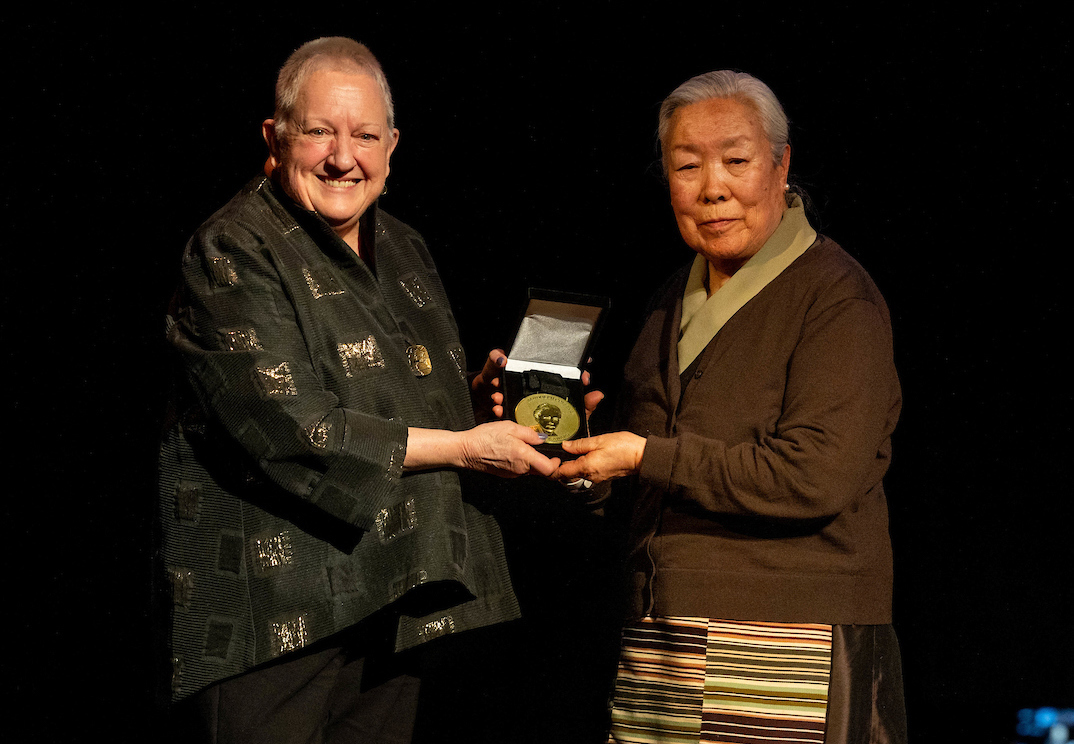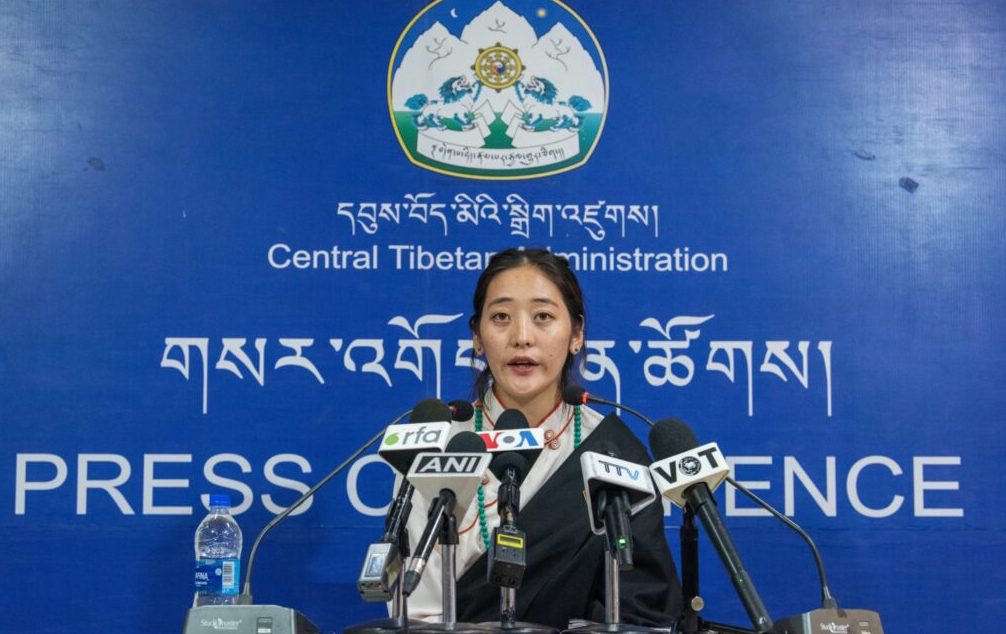By Tenzin Choephel
Phayul Correspondent
 Kathmandu – The Swedish Tibetan Society for School and Culture started a school project in Tibet in 1993 and has completed building 108 schools. The schools currently educate 13,000 students and the organization directly sponsoring over 1000 school children and 40 college students in Tibet. We met Mr. Lobsang Nyendak Sherlho Khangsar, the secretary of the organization in Kathmandu for an interview on his way from one of the visits to Tibet. Mr. Lobsang-la was born in Katsel Village of Meldro Gungkar County, Tibet Autonomous Region, and is lives in Sweden. Following are excerpts from the interview.
Kathmandu – The Swedish Tibetan Society for School and Culture started a school project in Tibet in 1993 and has completed building 108 schools. The schools currently educate 13,000 students and the organization directly sponsoring over 1000 school children and 40 college students in Tibet. We met Mr. Lobsang Nyendak Sherlho Khangsar, the secretary of the organization in Kathmandu for an interview on his way from one of the visits to Tibet. Mr. Lobsang-la was born in Katsel Village of Meldro Gungkar County, Tibet Autonomous Region, and is lives in Sweden. Following are excerpts from the interview.
Phayul: Please give us an introduction of the 108 Schools Project?
Lobsang-la: I will tell you from beginning. Mr. Sonam Jamyangling started this project. He came to India in 1959 with his uncle, around that time Tibetan Government-in-Exile sent about 20 Tibetan children to Denmark for education. He was one of them. He finished college and then went to Tehran, Iran to study mechanics. Later he returned to India and settled in Bylakuppe Tibetan Refugee Settlement in South India and worked there. He became ill and doctors in India told him that he had no hope. It was then that he returned to Denmark where he was cured of his disease and he became well again.
Phayul: How did Mr. Sonam come to Sweden?
Lobsang-la: He met Kalu Rinpoche who asked him to be the secretary of a Buddhist organization in Sweden to manage the activities of His Holiness the 16th Karmapa on his visits to Sweden in 1970s. After that he lived in Sweden for many years and managed the Buddhist Organization very successfully. They built a Buddhist sputa in Sweden, they invited the highest Buddhist Lama (referring to HH the Dalai Lama) and it was very good, everyone knows about it.
Phayul: How did the project first start?
Lobsang-la: In 1987, there were lots of pro-independent protest in Tibet and many were killed, these were shown on Swedish Television, many saw that and protested against it. My uncle was the president of Swedish Tibetan Association at that time and he led the protest against Chinese infront of the Chinese Embassy in Sweden. The Chinese Ambassador, Mr. Chang, who I also came to know later, said that Westerners are lying about the situation in Tibet, it is not like that in Tibet, everything is fine in Tibet, then he said that if you don’t believe then you can go to visit Tibet and see for yourself. My uncle noted this and 2-3 weeks later contacted the Chinese Embassy and said that he would like to visit Tibet. He made a group of about 25 people from Buddhist Organizations in five European countries and led a delegation to observe religious freedom in Tibet, for whom the Chinese Embassy gave visa.
Phayul: What did the delegation do in Tibet?
Lobsang-la: They visited many places in Tibet like Shigaste, Kongpo, and around Lhasa. I was in Tibet that time and met my uncle for the first time. They met Chinese authorities in Lhasa who asked them about their observation, they said that in the towns there are road, new houses etc. but the villages situation are still same – lack of schools because he saw poor children – and the told them that he would like to build a school. They then told him that it would be nice if he could build a house in his birthplace of Katsel Village in Meldro Gungkar County. He noted their words and returned to Sweden and established the Swedish Tibetan Society for School and Culture in 1988 and planned to building a school in Katsel. But due to bureaucracy it took many years and the actual construction was started in 1993.
Phayul: Whom did he talk with?
Lobsang-la: The main leader of the Lhasa Municipality during that time was a Chinese called Kung Fensen, after him was a Tibetan leader called Loka, then Gyasto became the leader and during his term their relation improved and Gyatso, Kedor from foreign affairs department and a Chinese from the education department came to Sweden. They talked and an agreement was signed at the Chinese Embassy saying that schools could be build. There were some disagreement over the name of the schools but later it was decided to call it Sino-Swedish Friendship School according to Chinese wish.
Phayul: When was the actual construction of the first school started?
Lobsang-la: Then actual construction started in 1993 and the first school was opened in 1994 with 150 students, 50 from our Katsel Village and rest were orphan and poor children from other villages.
Phayul: How is the teaching method in your schools? Do you have to teach according to Chinese school curriculum or do you have freedom to choose your own?
Lobsang-la: Generally, we cannot invite any teacher or volunteer from outside to teach in our schools, so the teaching methods and curriculum is same as in the rest of Tibet. The only special thing we have is that we try to keep good English teachers in our schools. People also say that students from our schools have better English.
Phayul: How are the schools managed?
Lobsang-la: We don’t have any particular board to look after management of our schools, so the schools are same as in the rest of Tibet. We provide financial and material assistance but the textbooks are same as other schools.
Phayul: How is Tibetan subject taught?
Lobsang-la: Generally, there is Tibetan is taught from class 1 to 12. Ours are primary schools. Chinese is a major subject now in all the schools in Tibet and everyone knows about it, there is one Tibetan subject though.
Phayul: When were other 108 schools built?
Lobsang-la: The Katsel school became reputed and local people liked it. Our relation with authorities also improved and we started building schools and now we have completed construction of 108 schools with a library in Tibet.
Phayul: What is your main objective?
Lobsang La: In Tibet majority of people are live in villages and they are an important part of our society. But they have poor facilities. If people don’t have education then everything is difficult. So, our main objective is to give education to them whether is it taught in Tibetan or Chinese or English does not matter. They should get modern education because if you have education then you can think yourself and decide what is best for you, whether you like to study in Tibetan or Chinese or English, you have to decide yourself. I think if one is educated then that person would be different.
Phayul: Do you think there would be any change in status of Tibet in future?
Lobsang La: There is unbelievable change going on in Tibet, like it happened in Sweden in 1800s, it is happening in Tibet now, people are moving to cities and there is big change in Tibet. Everyone knows that more and more Chinese are coming to Tibet and Tibetans are becoming minority in Tibet, so if Tibetans don’t preserve their culture then there is risk of losing it. If such things happen, it is not only a loss to Tibetans but for China because Tibetan culture is also an ornament to China. I think politically also there would be changes because China is becoming rich, when you become rich you want more happiness and your ambitions would change.
Phayul: How many students are there in your 108 schools?
Lobsang-la: It is not the school buildings but the students are our main wealth, at present we have about 13,000 students in 108 schools.
Phayul: Where are your schools in Tibet?
Lobsang-la: We have schools in all the regions of Tibet Autonomous Region, also in Amdo and Kham Regions, Yunnan (Dechen). So we have schools all over Tibet. We are celebrating the successful completion to 108 schools in Tibet on 26th November 2006 in Stockholm, Sweden, for which we have invited many people from different countries and also a six-member delegation from Tibet including Drigung Rinpoche. About 1000 students have sponsors who get monthly financial assistance for food, health, educational tours etc.
Phayul: How many students have gone to college until now?
Lobsang-la: Some of our first students have now joined colleges and universities, some are going to Tibet University in Lhasa and some are going to colleges in Mainland China. There are about 40 students who are completely supported by us.
Phayul: People say that Tibetan children completing school from Mainland China are becoming Chinese, what do you think?
Lobsang-la: I think the children know their roots and their feeling towards their people increase after they get education. It is true that their Chinese is better than Tibetan but their love for their people definitely becomes stronger.
For more details of the project and organization log on to www.tibet-school.org









